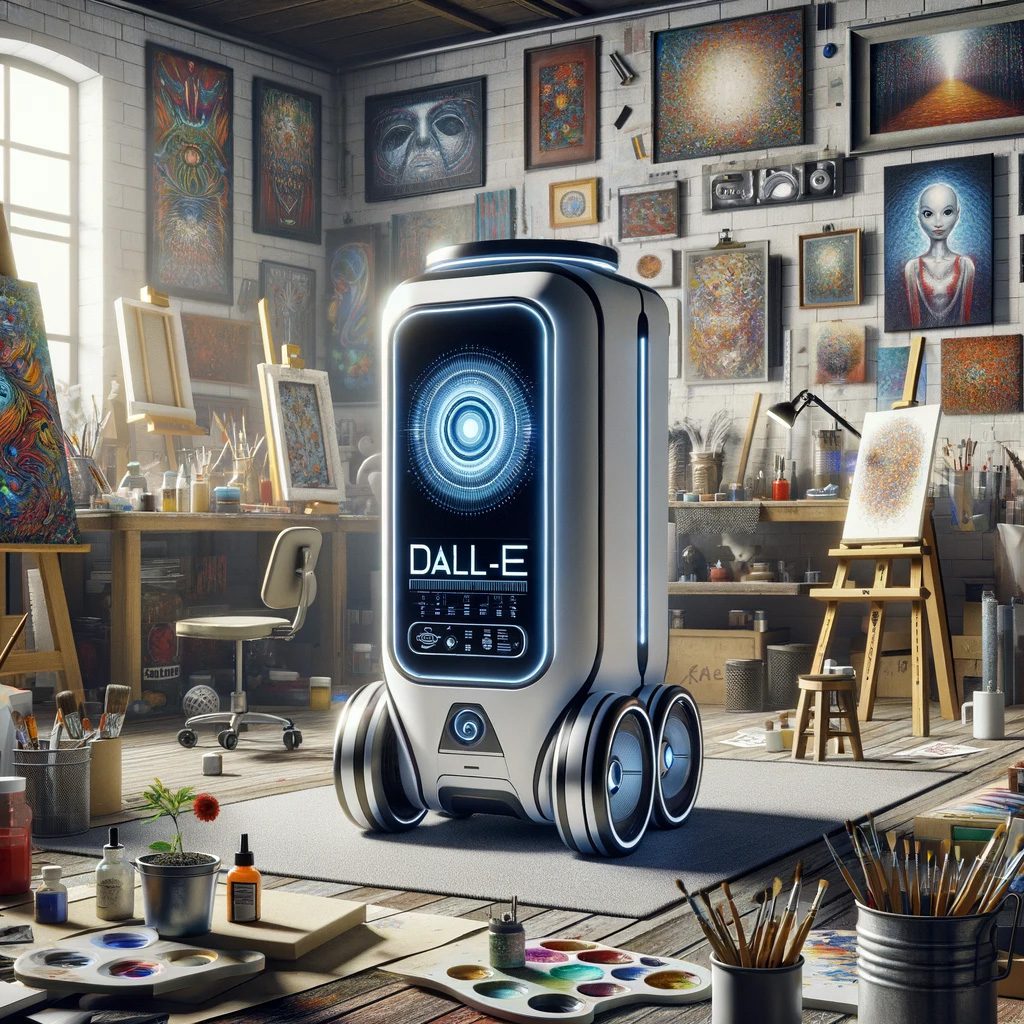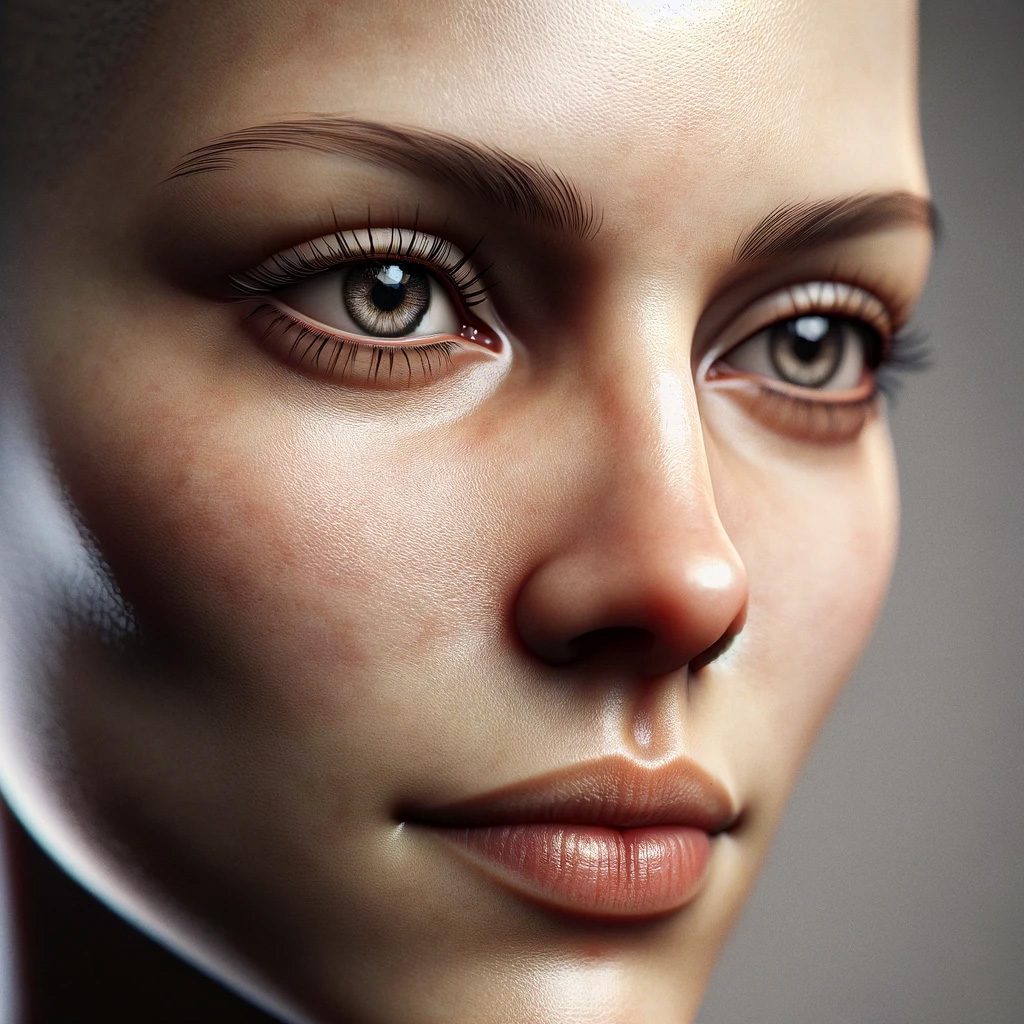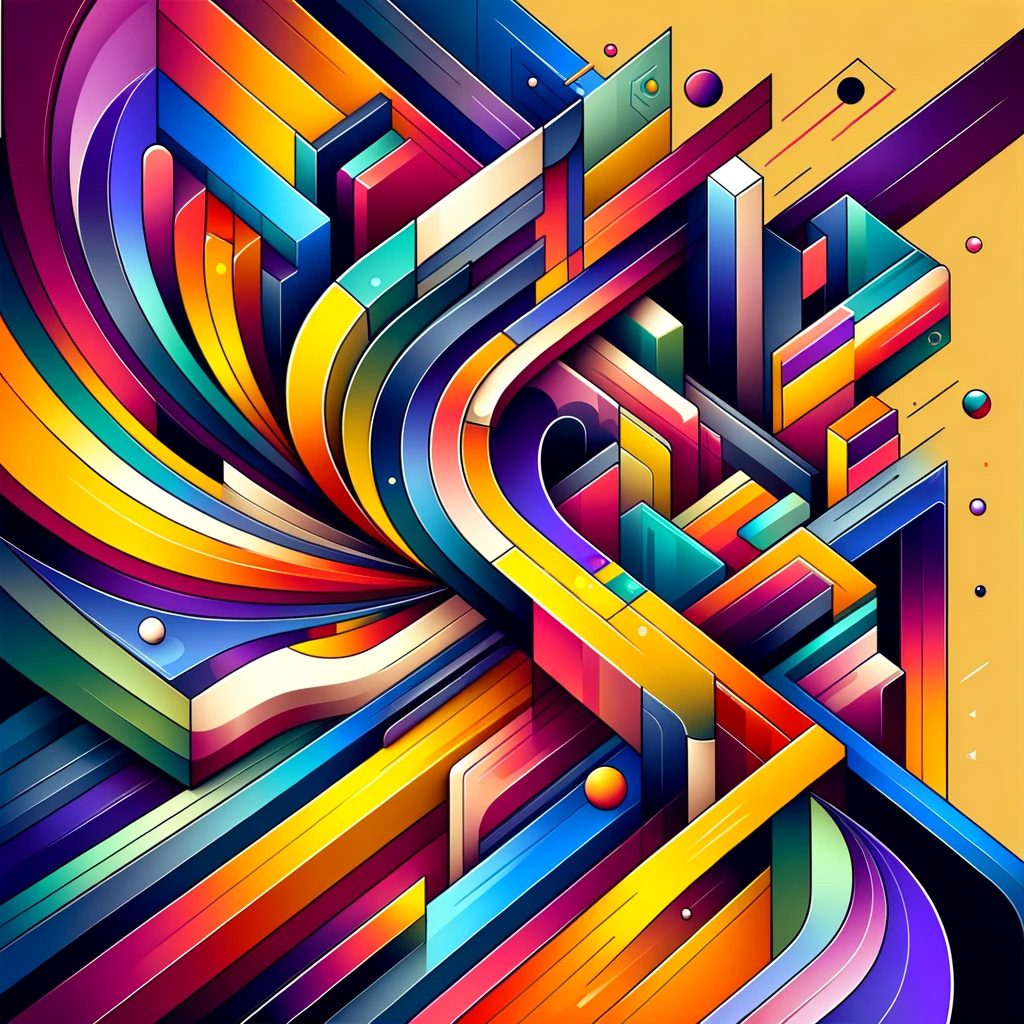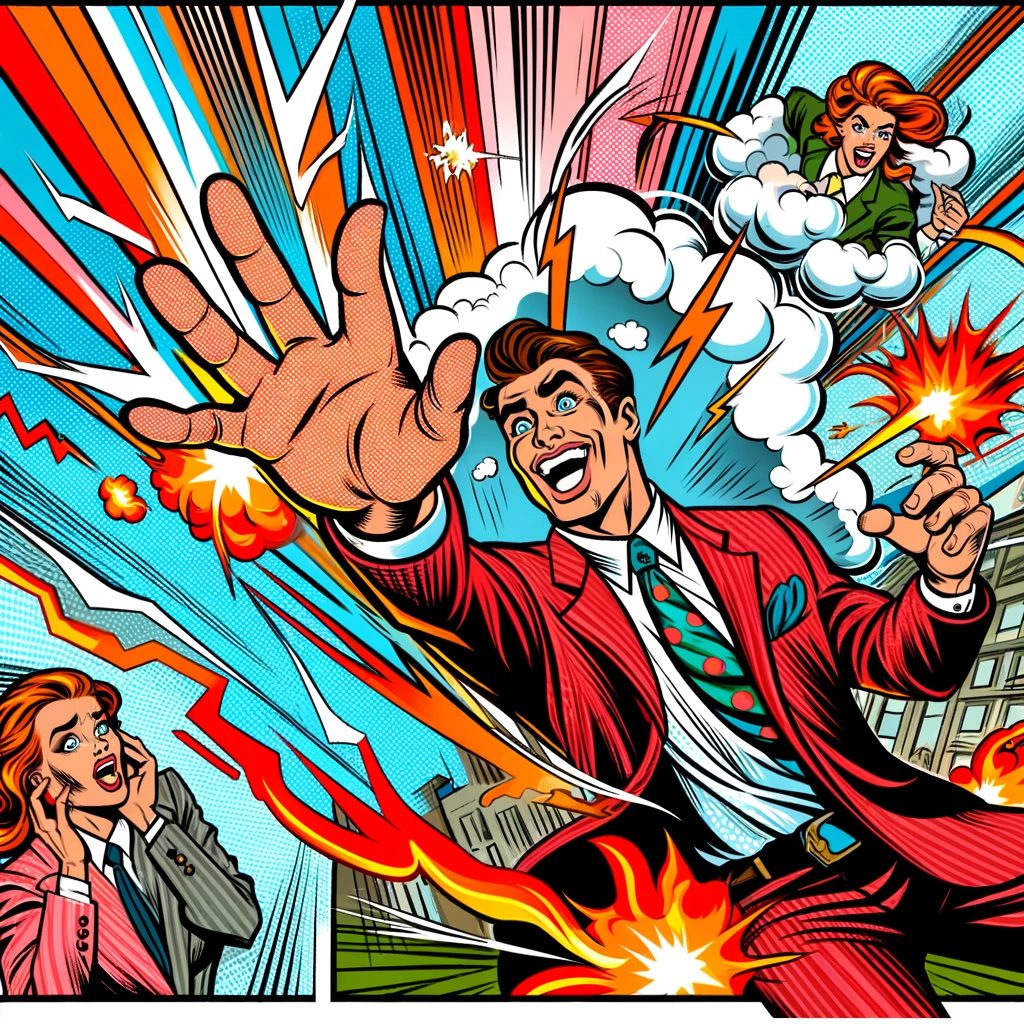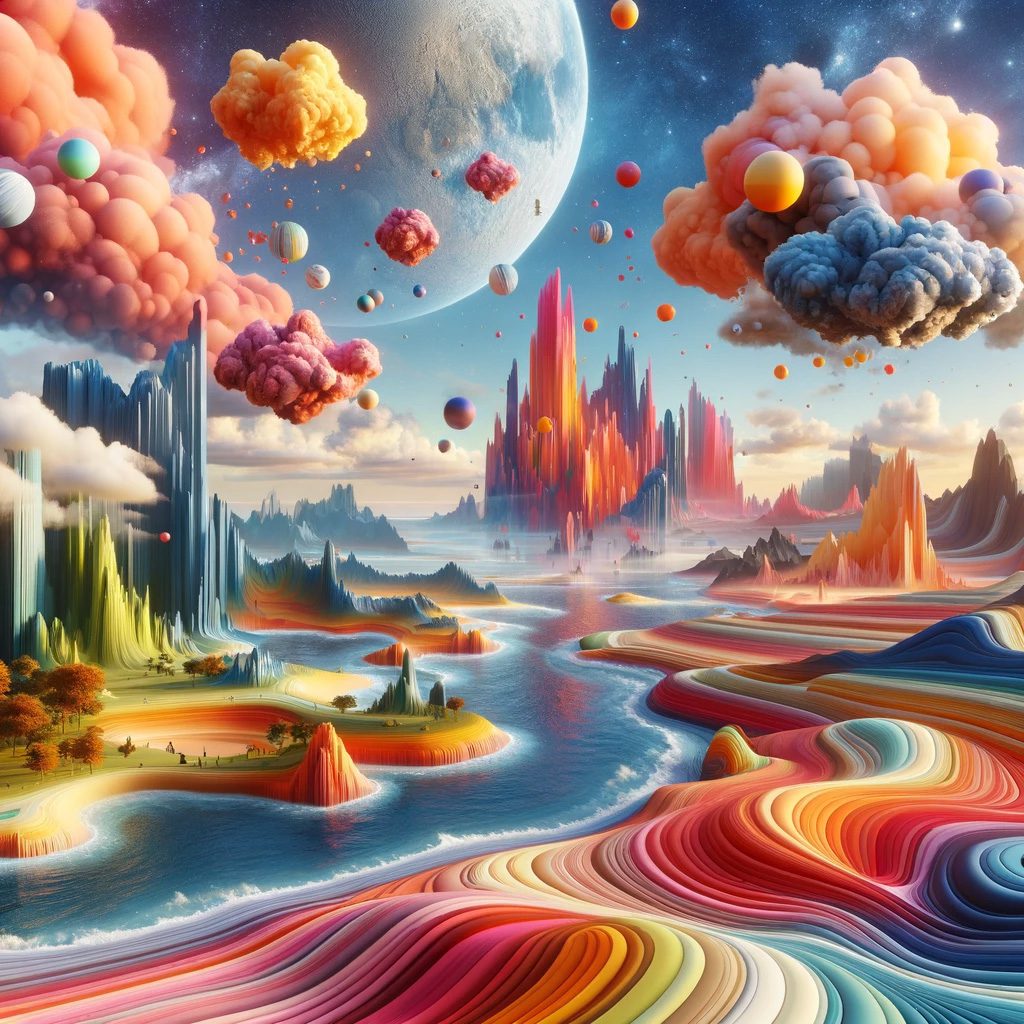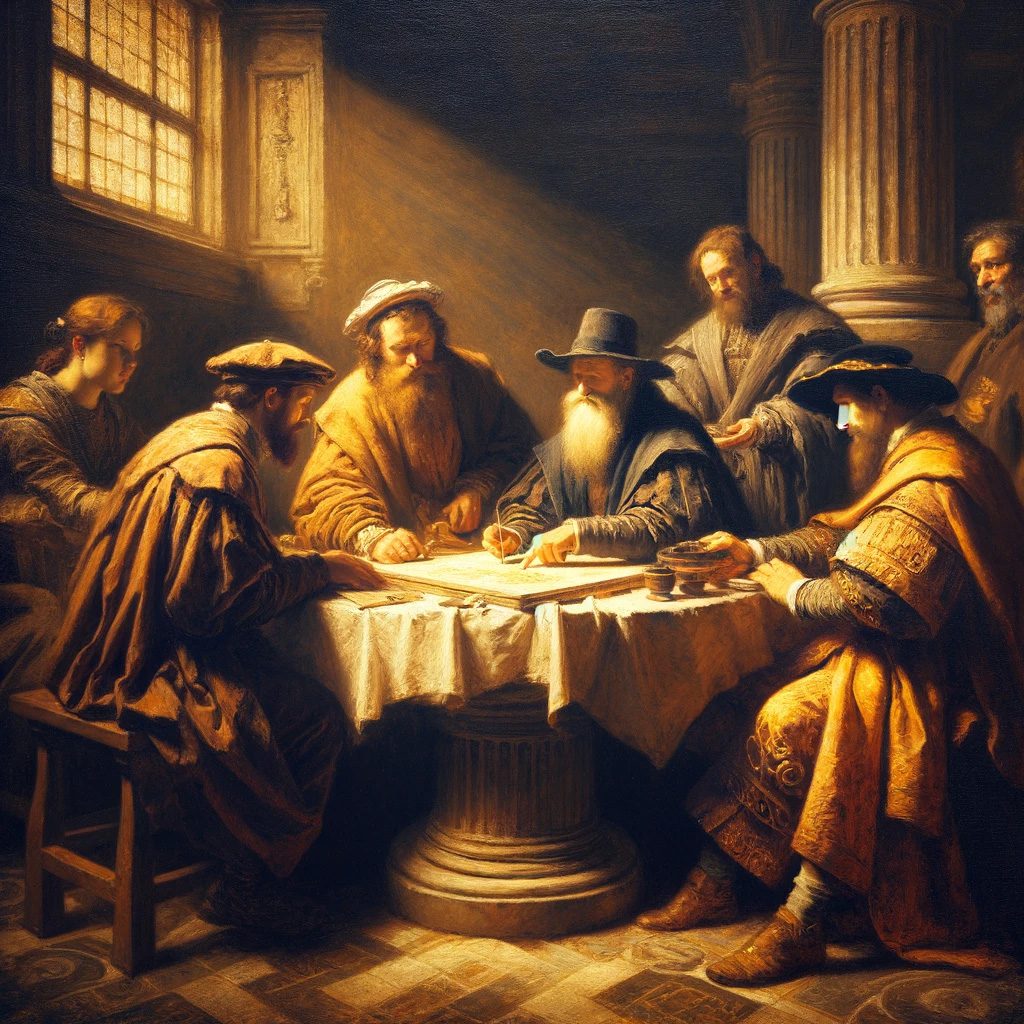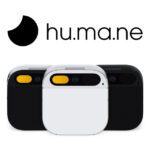Imagine being able to create any image that comes to mind in seconds, using just a few words. That's exactly what Dall-E enables (Visit Dall-E website), a generative image AI from OpenAI. This machine learning-powered technology has turned the world of digital art and design on its head in the last few months, and I suspect it will continue to do so in the years to come.
At a time when artificial intelligence touches more and more areas of our lives, Dall-E and other image AIs are at the forefront of this development and show us how far the boundaries of creativity can already be pushed.
Chapter in this post:
- 1 Development and function of Dall-E
- 2 versions of Dall-E
- 3 Comparison with other image AI tools
- 4 Dall-E vs. Midjourney
- 5 areas of application of Dall-E
- 6 Dall-E 3 – The latest version
- 7 Using Dall-E via ChatGPT
- 8 examples of images and prompts with Dall-E
- 9 Image 1 – Portrait
- 10 Image 2 – Abstract Art
- 11 Image 3 – Comic
- 12 Image 4 – Surreal landscape
- 13 Image 5 – Painting
- 14 Limits and Challenges by Dall-E
- 15 My conclusion
- 16 My tips & tricks about technology & Apple
- 17 Similar posts
Development and function of Dall-E
Dall-E was developed by OpenAI, the same team behind the well-known language model GPT-4 and the chatbot ChatGPT. This AI uses advanced algorithms to generate visual works of art from text descriptions. What's special about Dall-E is that it doesn't simply merge existing images, but creates completely new images based on text input. This ranges from simple objects to complex scenes and characters.
Dall-E's breadth and versatility make it a powerful tool for designers, artists, and anyone who wants to visually translate creative ideas. This ability to create images from words not only opens up new creative possibilities, but also represents an impressive technological achievement.

Versions of Dall-E
Here is a list of the different versions of Dall-E with their release dates:
- Dall-E (First version): Published on January 5, 2021. This initial version of Dall-E represented a significant advance in AI-powered image generation.
- From E 2: Announced on April 6, 2022. Dall-E 2 entered beta on July 20, 2022 and opened to all users on September 28, 2022. This version was designed to generate more realistic images in higher resolutions.
- From E 3: Published on August 10, 2023. Dall-E 3 was presented as a further development that could understand “significantly more nuances and details” than previous versions.
This data provides an overview of Dall-E's development and improvements over time.
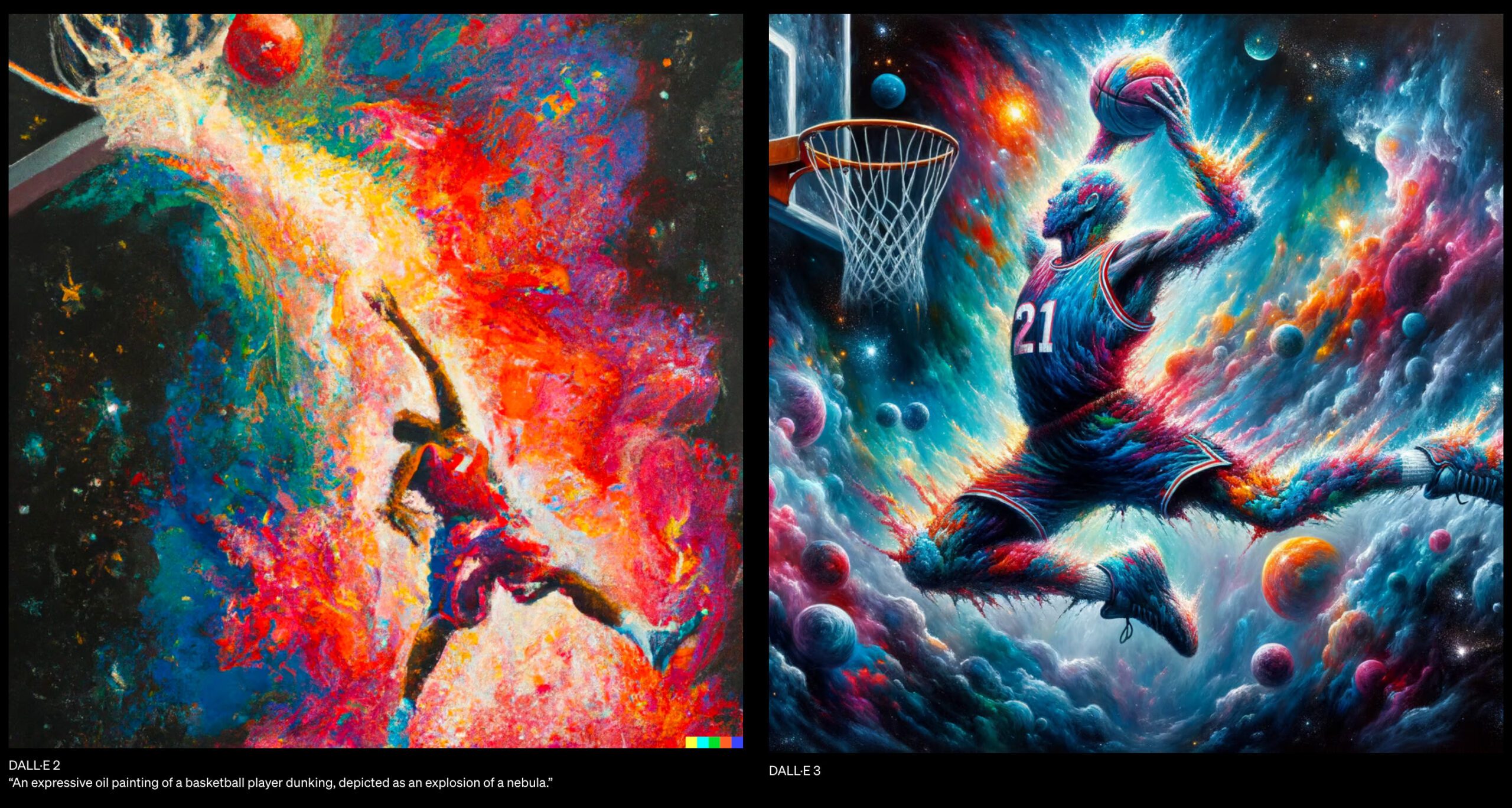
Comparison with other image AI tools
While Dall-E has impressive capabilities in generating creative and often surreal images, there are also other notable AI-based image generation tools, each with their own strengths.
- midjourney: Known for photorealistic images and superior image composition and aesthetics.
- Artsmart.ai: Allows you to create high-quality images with various advanced settings.
- Leonardo.ai: Specializes in gaming content and offers a wide range of features.
- Stability.ai Dream Studio: Leverages the latest stable diffusion models and is ideal for experimental creations.
- adobe firefly: Provides an intuitive interface and is optimized for Adobe users.
- Stockimg.ai and Supermachine: Ideal for quickly generating stock images.
- BlueWillow by LimeWire: Offers unique styles and a user-friendly platform.
- DALL E 2 (OpenAI Labs): An earlier version of Dall-E with its own features.
- Neuroflash AI Image Generator, Jasper Art, Canva Create, Craiyon, Photosonic, Nightcafé, Runway, ArtSpace.ai, Mindverse: More options, each with their own specific features and strengths.
These tools differ from Dall-E in terms of image quality, areas of application, ease of use and specific functions. While Dall-E is ideal for creative and imaginative images, other tools offer advantages in the creation of photorealistic images, processing speed or in specific application areas such as game content or stock photos.
Dall-E vs. Midjourney
I have been able to use both Dall-E and Midjourney in the past and have had the following experience: Midjourney is always ahead when it comes to achieving photorealistic results. Whenever I want to create something that looks realistic, I use Midjourney.
In my opinion, Dall-E has its strengths in two points:
- It “understands” the prompt very well and you can easily create thumbnails for YouTube or images for blog posts. Dall-E is particularly good if you want text to be included in the image. Midjourney has upped the ante with version 6, but I often rely on Dall-E when it comes to text in images.
- If you want to gradually develop an image in cooperation with ChatGPT, then ChatGPT Plus and Dall-E work extremely well. I tell ChatGPT what image I need and it creates an image for me. Then I explain to him what should be different and he adjusts the prompt in the background. In this way, I gradually get closer and closer to my desired result and don't have to work on the image prompt myself. ChatGPT does the work.
But it always depends on the individual case which tool is more suitable. I haven't had much experience with Leonardo.ai so far, but it hasn't blown my socks off like Midjourney has in terms of results.
But here is an example of a photorealistic image in Dall-E and Midjourney. The prompt is:
A photorealistic portrait of a cyborg, blending human features with subtle mechanical elements, highlighted by a luminous, intelligent gaze.
And here is the result of Dall-E 3:

And the result of Midjourney (V 6.0 alpha):

Areas of application of Dall-E
Dall-E offers a wide range of possible applications in various areas:
- Architecture and interior design: Fast visualization of buildings and interiors.
- Advertising and Marketing: Creating unique and creative campaign images.
- education and teaching: Generation of clear learning materials and illustrations.
- art and design: Creating unique artwork and design elements.
- Entertainment: Developing character designs and scenarios for video games and films.
- Logo and brand design: Creation of logos and brand images.
- Modeling and simulation: Support in creating 3D models and environments.
These examples show how Dall-E can revolutionize creativity and efficiency in various fields, from art to technology.
Dall-E 3 – The latest version
Dall-E 3 is the latest and most advanced version of this AI-powered image generation technology. This version offers improved features and greater precision in image generation. New features include an increased ability to create more detailed and complex images, as well as improved algorithms that enable even more accurate translation of text descriptions into visual content.
Dall-E 3 sets new standards in AI-powered image generation and pushes the boundaries of what is possible in digital creativity. Information about availability and costs is particularly relevant for those interested.

Unfortunately, Dall-E doesn't seem to immediately understand what you mean when you give this prompt:
A photorealistic portrait of a cyborg, blending human features with subtle mechanical elements, highlighted by a luminous, intelligent gaze.
The result looks like this in Dall-E 3:

This is what came out of Midjourney:
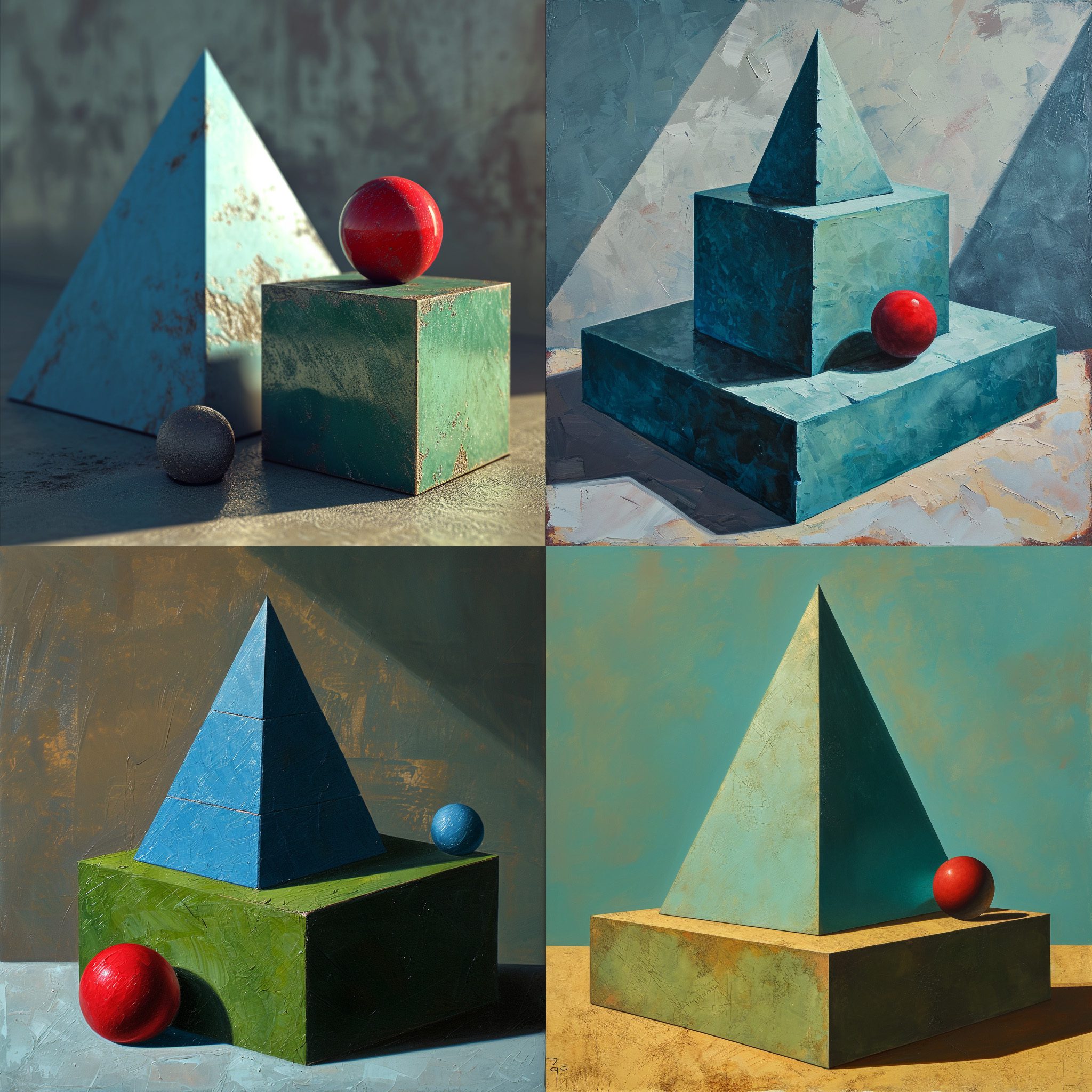
Using Dall-E via ChatGPT
The easiest and most effective way to work with Dall-E is currently via ChatGPT. This method offers the advantage that ChatGPT not only helps to formulate the text descriptions (prompts) for Dall-E, but also forwards them directly to Dall-E. This integrated approach makes the image generation process particularly user-friendly and efficient.
Users must log in to OpenAI and can then access Dall-E via the ChatGPT interface, with the quality of the results heavily dependent on the accuracy and creativity of the prompts entered.
Tip: If you want to see which prompt is currently being sent to Dall-E, simply ask in ChatGPT “What exactly does the prompt that was currently sent to Dall-E look like?”
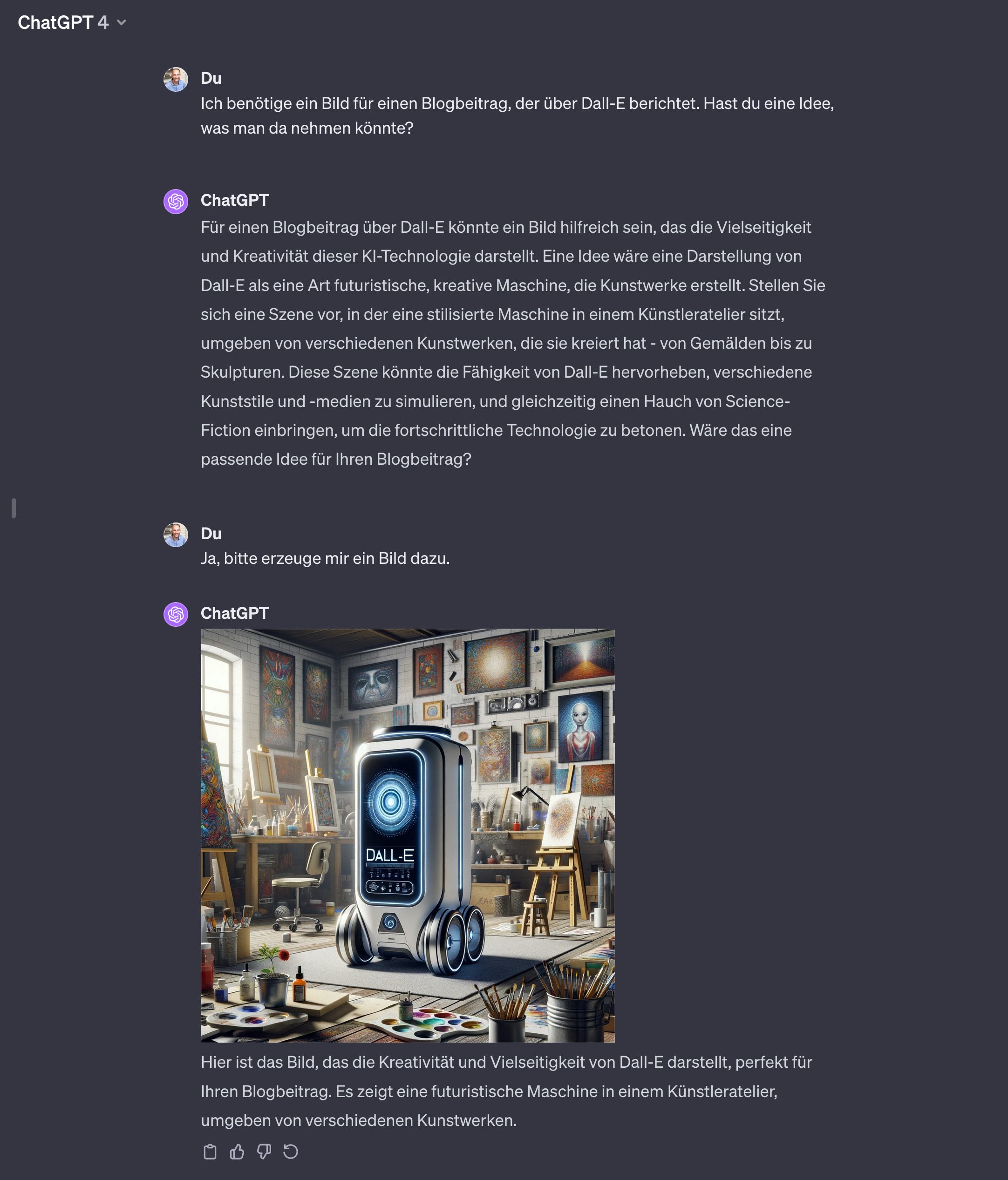
Examples of images and prompts with Dall-E
I created the following images by asking ChatGPT for a few ideas that show how versatile Image AI is. ChatGPT then used the ideas to create the prompts that were used to generate the images. And you can now find what came out of it here.
Image 1 – Portrait
Prompt:
A detailed, lifelike portrait of a person in a photorealistic style. The portrait is a close-up, showing the intricacies of skin texture, light reflections, and shading to emphasize the capability for realistic depiction. The facial expression is serene and thoughtful, with a focus on the eyes and subtle details like eyelashes and the texture of the lips. The lighting should be soft and natural, enhancing the realism of the portrait.
And here is the result of Dall-E 3:
Image 2 – Abstract Art
Prompt:
An abstract artwork using vibrant colors and unusual shapes to create a non-realistic artistic expression. The composition focuses on dynamic color interplay and geometric patterns, creating a visually engaging and thought-provoking piece. The arrangement of elements is balanced yet dynamic, featuring a mix of sharp angles and fluid curves, showing the versatility of abstract art creation.
And here is the result of Dall-E 3:
Image 3 – Comic
Prompt:
A comic-style illustration depicting a humorous or action-packed scene. The image should feature characteristically strong and stylized figures, suitable for graphic novels or children's books. Emphasis on bold lines, vibrant colors, and expressive characters to capture the essence of comic art.
And here is the result of Dall-E 3:
Image 4 – Surreal landscape
Prompt:
A surreal landscape depicting dream worlds or impossible scenarios, such as floating islands or landscapes with unusual color combinations. The scene should illustrate the ability to create imaginative and boundary-pushing scenes, featuring elements that defy conventional reality.
And here is the result of Dall-E 3:
Image 5 – Painting
Prompt:
A painting in the style of the old masters, such as Rembrandt or Leonardo da Vinci. This could be a historical scene or a classic portrait, demonstrating the ability to mimic traditional art styles. The artwork should capture the essence of Renaissance or Baroque art, with attention to detail, dramatic lighting, and rich textures.
And here is the result of Dall-E 3:
Limitations and challenges by Dall-E
Although Dall-E is an impressive image generation tool, it has its limitations in some areas. For example, there may be difficulties in creating lettering or accurately depicting anatomically correct limbs. These limitations may affect usability in certain use cases.
Furthermore, when using Dall-E, ethical aspects must also be taken into account, such as avoiding copyrighted material or creating offensive content.
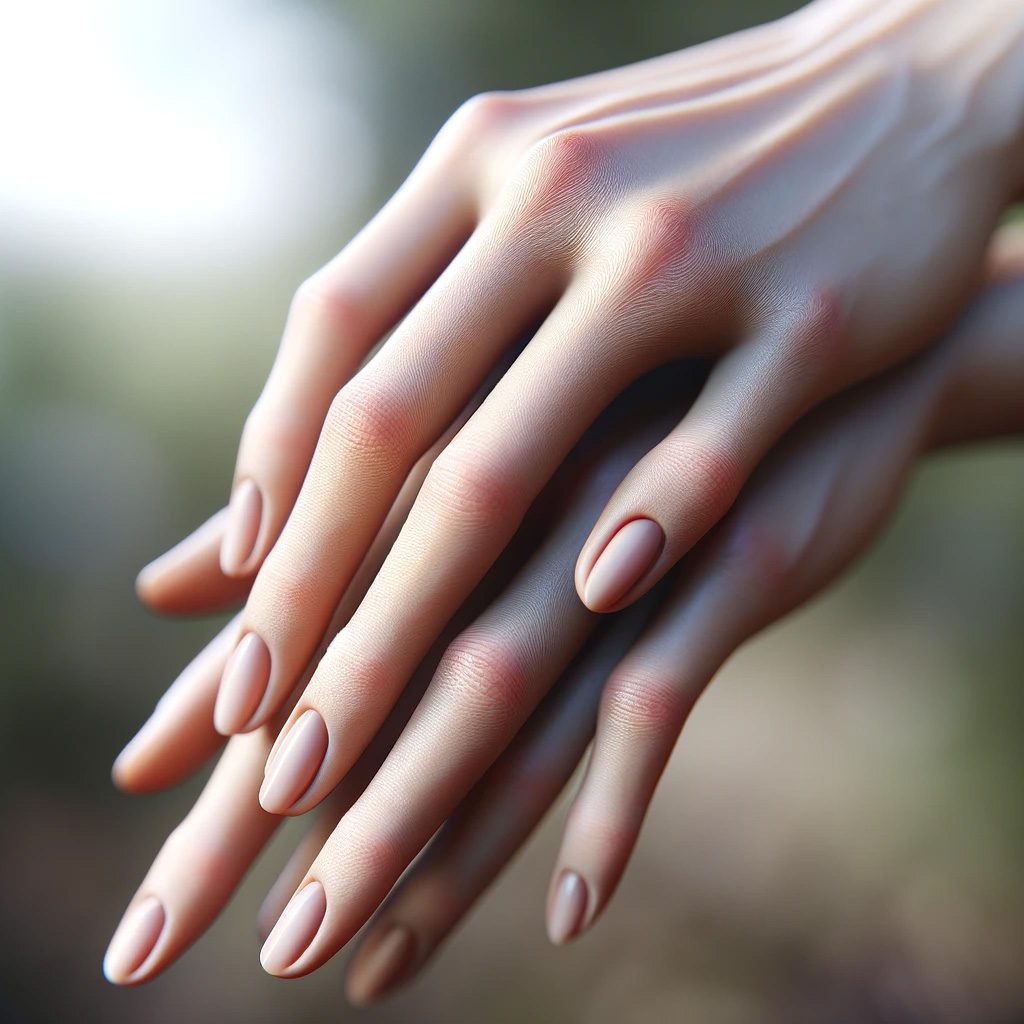
My conclusion
Dall-E may not be the best image AI tool on the market, but it is undoubtedly an impressive and versatile instrument. Its integration with ChatGPT is one of the most practical features, as it simplifies and makes the creation of images directly from text descriptions more efficient.
The implementation of long prompts, where Midjourney often omits something in the implementation, is also less of a problem for Dall-E. So if photorealism isn't what you're after, then Dall-E is a good choice.
My tips & tricks about technology & Apple
Related Articles
Jens has been running the blog since 2012. He acts as Sir Apfelot for his readers and helps them with technical problems. In his spare time he rides electric unicycles, takes photos (preferably with the iPhone, of course), climbs around in the Hessian mountains or hikes with the family. His articles deal with Apple products, news from the world of drones or solutions to current bugs.

